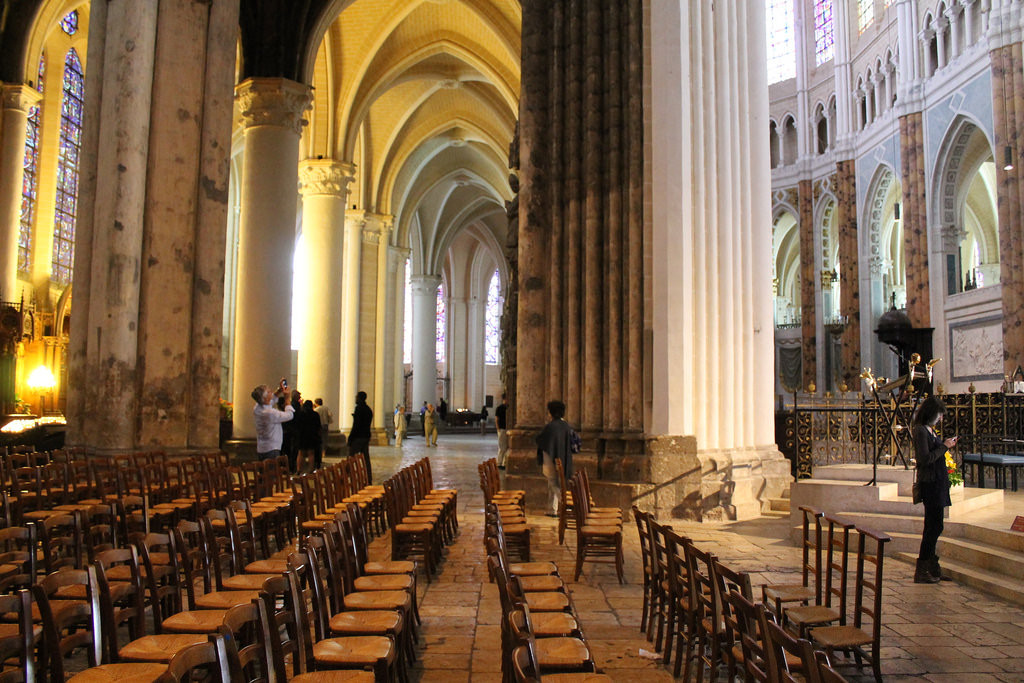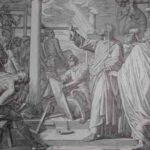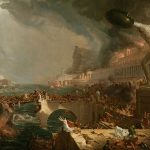
Worldviews and the Building of Cathedrals – and Civilisations
Would we still try to build things like cathedrals today?
In good measure your view of life will determine what you do – or don’t do. If you have a very bleak and gloomy worldview or philosophy, you may not be too keen to invest time and energy into much of anything, be it building a new home or working on some other long-term project.
On the other hand, if you have a more optimistic and hopeful view of things, including the future, you might be more inclined to engage in such activities. Yes, these are generalities, but this can be true of both believers and nonbelievers. Your perspective on life can well determine what you do with it.
Consider for a moment the non-Christian. We know that for the most part religious people – including Christians – tend to have more children than non-religious folks. Larger families are not the sole domain of the religious, but generally this is true – as research affirms. Atheists for example tend to have far fewer children: https://billmuehlenberg.com/2017/03/14/heaven-hope-households/
If a secular person thinks this life is all there is, and they are consumed with fear and worry about all manner of things – be it covid or climate change or overpopulation or whatever the latest scare is – they will be less keen on bringing about the next generation. ‘We are all doomed – we are all gonna die.’ If so, why bother having kids?
There is a real connection in other words between faith and demographics. Over a decade ago an important book appeared by the economist and political commentator David Goldman. Called How Civilizations Die (Regnery, 2011), it looks at how cultures – just like people – can die from a loss of hope and a loss of a sense of meaning and purpose. At the time I wrote this about it:
Says Goldman, “A good deal of the world seems to have lost the taste for life . . . Today’s cultures are dying of apathy, not by the swords of their enemies.” The degree of religious faith and human hope determine how nations fare. The more secular a nation is, the more likely its fertility rates will be plummeting.
A purely secular analysis will simply not do here: “Our strategic thinking suffers from a failure to take into account the existential problems of other nations. We think in the narrow categories of geopolitics, but we need to study theopolitics – the powerful impact of religious beliefs and aspirations on world events.” https://billmuehlenberg.com/2011/11/08/faith-population-and-national-survival/


I write all this because of a meme I recently found online. It shows a picture of the magnificent Cologne Cathedral in Germany and says this:
German poet Heinrich Heine was asked why men no longer build cathedrals. He replied: “People in old times had convictions; we moderns only have opinions. It needs more than an opinion to erect a Gothic cathedral.” Cologne Cathedral took 632 years to complete…
The question is, would people today engage in such long-term projects like this? And Christians can also be asked this. I know I have to be careful here, because so many Christians want to go to war over their pet views on eschatology and the end-times, but a few brief things can be mentioned.
One’s stance on theology and eschatology certainly can influence how a person thinks about things like cathedral building and civilisation building. Briefly and generally speaking, many in the premillennial camp will see things getting worse in this world, and may well be less inclined to bother with salvaging things.
Those holding to forms of postmillennialism will be more optimistic about the future, and what can be done with it. Sure, there are exceptions. As I often say, two key English evangelicals who were both up to their ears in social reform differed big time in their eschatology: Lord Shaftesbury was premil while William Wilberforce was postmil. See more on this here: https://billmuehlenberg.com/2010/11/30/on-the-millennium-part-one/
One recent online debate about whether the great cathedrals would have been built by those committed to a premil view of things got a bit vigorous. Some tried to say that a premil view predominated then. Well, not quite: While chiliasm was held by many in the early church, it differed quite a bit from modern dispensational premil views, and by the time cathedrals were being built, postmil or amil views were in the ascendency.
And not meaning to run with just one version of events here, but some readers might want to take a look at a piece by Doug Wilson. He calls himself an “optimillennialist” and this short article offers a bit of food for thought on these matters: https://dougwils.com/the-church/s16-theology/even-postmillennialists-get-the-blues.html
But as I say, I really do not want to rehash all those debates and revisit all those wars yet again! Yet there is some truth here about how eschatology can impact how we look at issues like culture-building and the like. And as I often remind folks, I prefer to go with Jesus here who told us to ‘occupy till he comes’.
That is, whatever our views are on end time events, we all should be busy with the work of the Kingdom. As Martin Luther is reported to have said: ‘If I knew Christ was returning tomorrow, I would plant an apple tree today.’ Sure, if we knew for sure he was coming tomorrow, we might not start a major building project – like a Gothic cathedral. But we do NOT know for sure when he will return.
So we continue to be salt and light, and we continue to do the work the Lord has called each of us to do. Whether we will see any more great religious structures erected like the cathedrals of old remains to be seen. The Sagrada Familia basilica in Barcelona designed by architect Antoni Gaudí (1852–1926) was begun in 1882 and is still not completed (it might be finished by 2040!).
But my general point here is that when a people have hope and a brighter view of the future (including the next life), that can result in all sorts of long-term projects being engaged in – even ongoing work on civilisations as well. Certainly the Christian church of two millennia ago helped to give birth to Western civilisation.
The problem is, today too many folks are more committed to seeing it torn down. But that is the stuff of another article. In sum, I for one, if I ever get back to Europe again, look forward to seeing many more of these magnificent structures. Yes I know, some Christians do not care at all for such things, but I have discussed that elsewhere: https://billmuehlenberg.com/2019/04/17/cathedrals-catholics-and-christianity/
[1128 words]




















Good thoughts, and there is the practical side, too – modern skilled labour is very expensive compared to say 500 years or more ago; and the power and social structures were very different, as well. An architect may have more insight on the impact upon the collective psyche back then, compared to now. For example, today we would not build a ziggurat to try for the same impact as a Tower of Babel; I think in the modern era one only need look to see where the most public money goes ostensibly for the ‘good of mankind’ – and there will be ‘satanic towers of worldliness’.
Thanks Eddie.
The cathedrals in Europe and the United Kingdom are stunning, and huge, with high hand-painted decorated ceilings, domes and walls. Each tells a story with stained glass windows, reflecting their life. These places of worship were appreciated and valued highly then. Do we value their beauty today? Some may say yes, and some may say no.
G’day Bill,
Newstead Station (near Inverell, NSW) is famous for the Tom Robert’s painting ‘Shearing at Newstead (The Golden Fleece).’ The woodshed, is made of rounded bush timber. The station homestead is built of milled timber. But the Anderson family built a Presbyterian Church (sadly burnt down many years ago and now a ruin) out of brick. Clearly their priority was spiritual rather than their work or even family.
The usual claim is that it is a waste of resources – spending all that effort on a building rather than spending it on people. However, sometimes there is more impact on more people by concentrating the effort onto one major thing. For example – Darwin spent 20 years crafting his origin of species book, then fired it like a missile to massively destructive effect. Contrast this to a local church preparing a cake stall and raising $17.50 for missions. I reckon a modern equivalent to the old cathedrals (and arguably more effective) would be something like the Ark Encounter in Kentucky. Lots of money, effort and dedication to build something to bring attention to God, and even some Christians claim “Why not spend that effort on helping the poor?” Well, if thousands of people start to take the Bible seriously that would have a bigger effect than helping some pocket of poor people that will always exist (Jesus words, not mine).
My late husband and I actually visited La Sagrada Familia in Barcelona about fifteen years ago and talk about Gloria in Excelsis Deo!!! I know modernist architecture isn’t everyone’s cup of tea but Gaudi’s masterpiece will be an enduring moment to his commitment and ardour for Christian faith when it is eventually completed. It is so reminiscent of the older medieval structures that it makes one gasp in awe of the deep spirituality and devotion to our Lord and Saviour that underlies it.